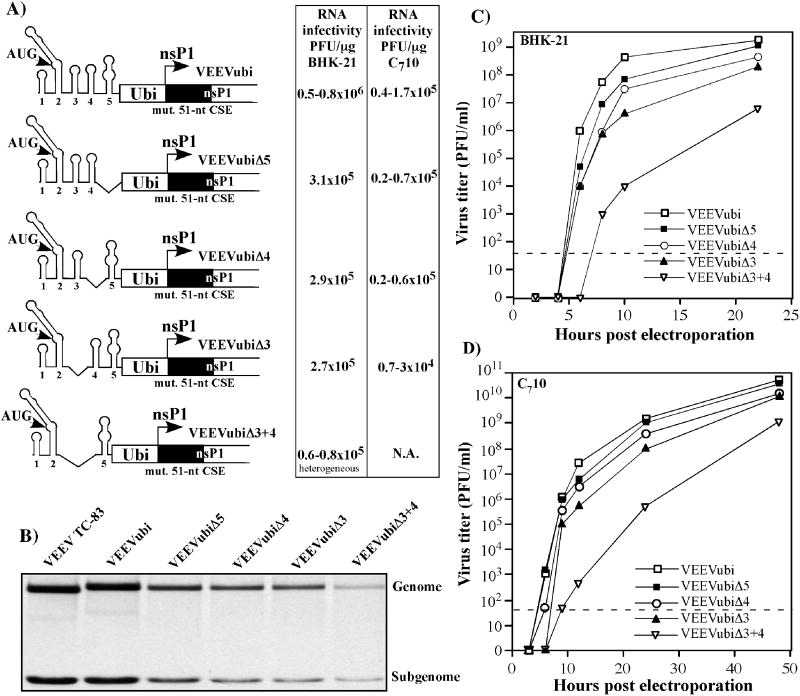FIG. 2.
Replication of VEEVubi deletion mutants in BHK-21 and C710 cells. (A) Schematic representation of VEEVubi deletion mutants genomes and infectivities of the in vitro-synthesized viral RNAs in the infectious center assay. Solid boxes indicate the nsP1 sequence containing clustered silent mutations. N.A. indicates “not applicable,” because the mutant was incapable of forming plaques in C710 cells. (B) Synthesis of virus-specific RNAs in the transfected BHK-21 cells. At 2 h post transfection with 3 μg of in vitro-synthesized RNA, viral RNAs were metabolically labeled with [3H]uridine for 6h, as described in Materials and methods, and analyzed by agarose gel electrophoresis. Positions of the genomic and subgenomic RNAs are indicated. (C and D) Single-step viral growth curves after electroporation of 3 μg of in vitro-synthesized RNAs into BHK- 21 and C710 cells. At the indicated times, the medium was replaced and virus titers determined in BHK-21 cells, as described in Materials and Methods. The dashed lines indicate the limit of detection.

